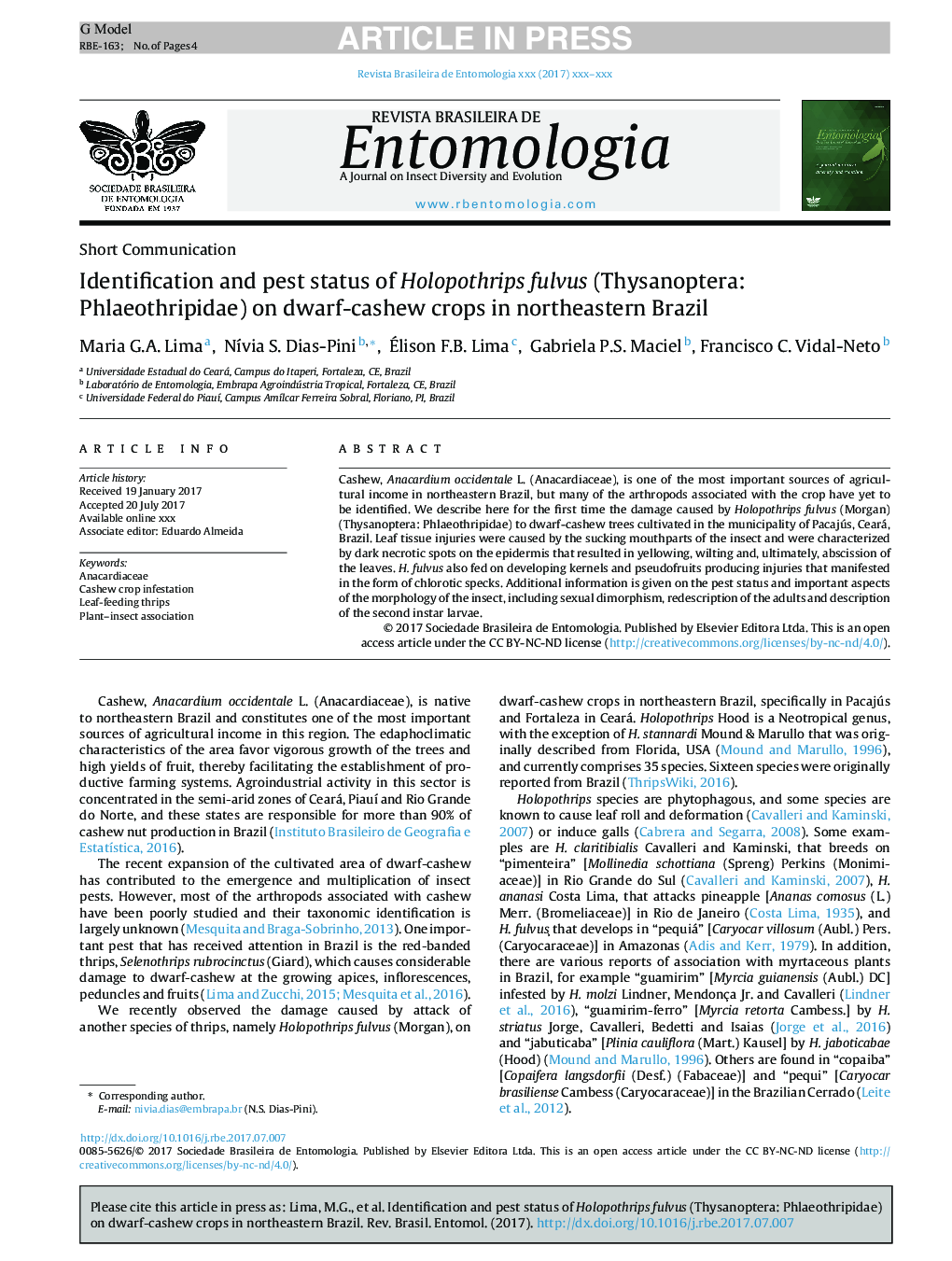| Article ID | Journal | Published Year | Pages | File Type |
|---|---|---|---|---|
| 8877219 | Revista Brasileira de Entomologia | 2017 | 4 Pages |
Abstract
Cashew, Anacardium occidentale L. (Anacardiaceae), is one of the most important sources of agricultural income in northeastern Brazil, but many of the arthropods associated with the crop have yet to be identified. We describe here for the first time the damage caused by Holopothrips fulvus (Morgan) (Thysanoptera: Phlaeothripidae) to dwarf-cashew trees cultivated in the municipality of Pacajús, Ceará, Brazil. Leaf tissue injuries were caused by the sucking mouthparts of the insect and were characterized by dark necrotic spots on the epidermis that resulted in yellowing, wilting and, ultimately, abscission of the leaves. H. fulvus also fed on developing kernels and pseudofruits producing injuries that manifested in the form of chlorotic specks. Additional information is given on the pest status and important aspects of the morphology of the insect, including sexual dimorphism, redescription of the adults and description of the second instar larvae.
Keywords
Related Topics
Life Sciences
Agricultural and Biological Sciences
Agricultural and Biological Sciences (General)
Authors
Maria G.A. Lima, NÃvia S. Dias-Pini, Ãlison F.B. Lima, Gabriela P.S. Maciel, Francisco C. Vidal-Neto,
